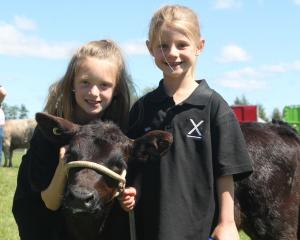
A public meeting was held last week to educate and enable the community about the ongoing issues with the aquifer, after some residents ran out of water.
Environment Southland director of science and information Graham Sevicke-Jones said the past season and a-half had been fairly dry, which meant the aquifer was not recharging.
Environment Southland water resources scientist Lawrence Kees said that the key issue was that the aquifer was not recharging due to the recent lack of rainfall.
The only way the Edendale aquifer was recharged was through rainfall, and because of 2017's dry summer, winter and autumn, it had not been topped up.
''We just weren't getting enough rain - for the year about 80% of the rain,'' Mr Kees said.
Environment Southland held the meeting because there had been concerns raised by the community about the low aquifer levels.
''Many of you who have expressed concern live near Homestead Rd ... Some of you will have really high yielding bores, and then some of you within that will have some very low yielding bores and have gone dry and have had to deepen your bores,'' Mr Kees said.
It was unlucky but it was down to how the aquifer was laid out, he said.
He raised the elephant in the room about Fonterra and its water take from the aquifer.
''We might see localised effects,'' Mr Kees said.
It was unlikely Fonterra was causing any significant effect on the aquifer, he said.
''Localised effects of pumping will affect bores near by. It will affect some more than others.''
When it came to how Environment Southland allocated water from the aquifer, it was worked out through a complex system, and rather than allocating so much of the aquifer, the council allocated about so much of the rainfall recharge, he said.
Community members raised issues about how much water was being taken from the aquifer and where it was being taken from, including in relation to Fonterra.
''Not one consent holder consistently uses more than they're allocated,'' Mr Kees said.
Fonterra's southern operations manager Richard Gray said Fonterra was consented to take 4.5million cubic metres of water per year, but used only about 3million cubic metres.
''Yes, we are the most significant user of water out of that aquifer.''
Looking at the data, even when Fonterra was taking very little water from the aquifer in June-July, the aquifer was still declining, he said.
Mr Kees said overall the key problem was the aquifer not recharging.
''What you've experienced this year may well happen next summer, even with a normal amount of rainfall,'' Mr Kees said.
He acknowledged it was a difficult situation, but the way council worked was reactive to what was going on, he said.














